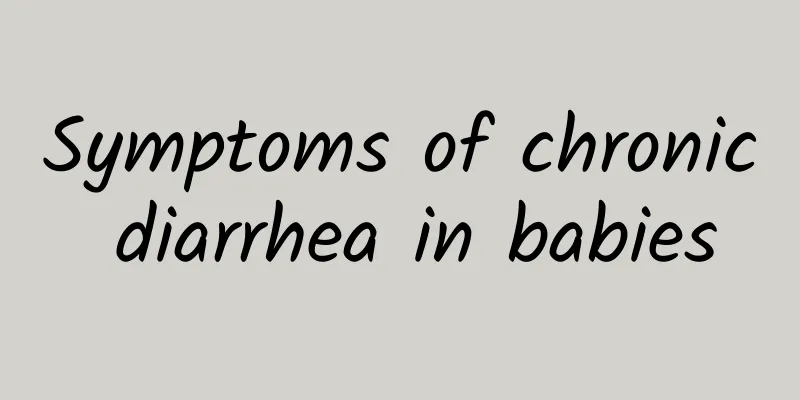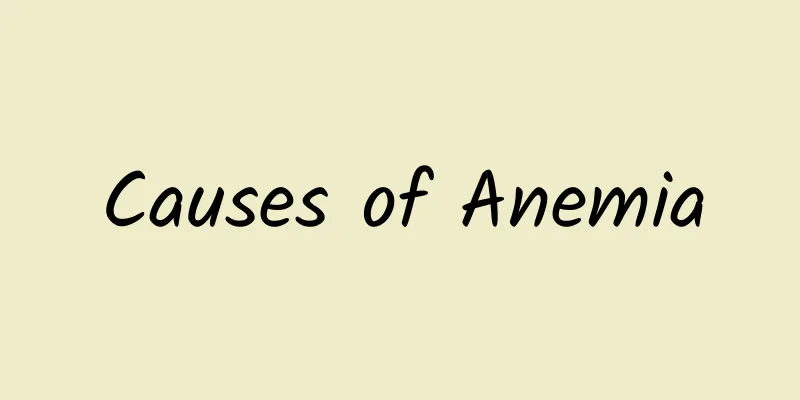Symptoms of chronic diarrhea in babies

|
The baby's gastrointestinal tract is not fully developed, so it digests food slowly. Diarrhea is a common problem, especially for babies a few months old, because they have been breastfed or formula-fed before. When adding complementary foods, they are more likely to suffer from gastrointestinal diarrhea. The baby's immune system is relatively low, and he needs to slowly adapt to the addition of complementary foods. So what are the symptoms of chronic diarrhea in babies? 1. What are the symptoms of chronic diarrhea in babies: Children with hypocalcemia who are originally malnourished, rickets or have diarrhea for a long time often develop symptoms of low calcium such as irritability, tetany and even convulsions after feeding. Examination revealed positive Foster's and peroneal reflexes. 2What are the symptoms of chronic diarrhea in babies: hypomagnesemia A small number of children develop hypomagnesemic tetany after correction of dehydration, acidosis and calcium supplementation. Symptoms include tremors in the hands and feet, convulsions, crying, being easily irritated, and being unable to sleep. Some children develop redness on the forehead or in skin folds. 3 What are the symptoms of chronic diarrhea in babies: hypokalemia Obvious hypokalemia often occurs after watery diarrhea for more than one week, and occurs earlier and more severely in those with pre-existing malnutrition. Generally, children rarely have symptoms of hypokalemia before infusion. After infusion of potassium-free fluids, as dehydration and acidosis are corrected, symptoms of hypokalemia gradually appear: mental depression, low muscle tension, and dull first heart sound. If the condition is more serious, abdominal distension, weakened or absent bowel sounds, and weakened tendon reflexes may occur. If potassium is not supplemented in time, severe hypokalemia may cause muscle paralysis or even respiratory muscle paralysis, intestinal paralysis, bladder paralysis, disappearance of tendon reflexes, slow heart rate, arrhythmia, systolic murmur at the apex, and heart enlargement, which can be life-threatening. 4 What are the symptoms of chronic diarrhea in babies: acidosis The main symptoms are listlessness, deep breathing and wheezing. In severe cases, breathing may increase and the patient may even fall into a coma. Newborns or young infants may not have deep breathing or may develop it later. Their main symptoms include drowsiness, pallor, refusal to eat, weakness, etc. When estimating acidosis, pay attention to the age of the child. 5 What are the symptoms of chronic diarrhea in babies: dehydration The children lose weight quickly, become listless, have pale (even gray) skin with poor elasticity, sunken anterior fontanelle and eye sockets, dry mucous membranes, sunken abdomen, weak pulse, low blood pressure and decreased urine volume. Dehydration is divided into three levels: mild, moderate and severe: ① Mild dehydration: fluid loss is less than 5% of body weight. The child is in a slightly worse spirit, has a slightly pale complexion, slightly dry skin but good elasticity, slightly sunken eye sockets, and urinates slightly less than usual. ②Moderate dehydration: fluid loss accounts for approximately 5-10% of body weight. The child is listless and irritable, and his skin is pale, gray, dry, loose, and has poor elasticity. It cannot be flattened immediately after being pinched. The area around the mouth turns blue, the anterior fontanelle and eye sockets are obviously sunken, the lips and mucous membranes are dry, the heart sounds are dull, the abdomen is concave, the limbs are cold, and the urine volume is significantly reduced. ③ Severe dehydration: fluid loss accounts for 10-15% of body weight. The child is listless and indifferent, has no reaction to the surrounding environment, has pale skin, has very poor elasticity, and does not flatten easily after being pinched. The anterior fontanelle and eye sockets are sunken, the eyes cannot close, the conjunctiva is dry, there are no tears when crying, the cornea is dull, the lips are cyanotic, the mucous membranes are dry and unclear, the heart rate is fast, and blood pressure is difficult to measure. The abdomen is deep. Cold limbs. Little or no urine. When estimating the degree of dehydration, attention should be paid to the degree of sunken eye sockets and anterior fontanelle. Hypotonic dehydration can easily lead to reduced skin elasticity, and malnourished children usually have poor elasticity, so this should be paid attention to. The clinical symptoms of different types of dehydration also vary. In hypotonic dehydration, due to the large loss of extracellular fluid, the child's dehydration symptoms appear early and are more severe, but the thirst is mild and the malaise is more severe; in hypertonic dehydration, the intracellular fluid moves outward and the loss of extracellular fluid is relatively less. The children are obviously thirsty, have fever, irritability, increased muscle tone, and occasionally have convulsions. The eye sockets and anterior fontanelle are slightly sunken, the hands and feet are warm, and the pulse is palpable. |
<<: What are the symptoms of globus hysterica?
>>: Symptoms of facial meridian blockage
Recommend
Compendium of Materia Medica Chinese Herbal Breast Enlargement Formula
In the basic theory of traditional Chinese medici...
What are the advantages and disadvantages of having a baby by caesarean section?
The method of knowing how to distinguish cesarean...
What ointment can cure chickenpox quickly?
I don’t know if you have ever had chickenpox in y...
Drinking Chinese medicine to stop menstruation
Nowadays, many women have symptoms such as irregu...
What causes intermittent pain on the right side of the head?
Headache is a very common physical disease in dai...
How to deal with facial swelling?
I suddenly found that my face was swollen, which ...
How to generate Yang Qi
If we want to grow hair and replenish Yang energy...
Symptoms of knee tendinitis
There are many types of knee tendinitis, but they...
Symptoms of babies accidentally ingesting antihypertensive drugs
Antihypertensive drugs are common medicines for t...
What to do if herpes grows on the lips? Several treatment methods
We all know that the lips and the surrounding ski...
Breast fibroids
Breast fibroids are a common disease in clinical ...
Does less vaginal discharge mean that you are not ovulating? What are the symptoms of ovulation?
Leucorrhea stringiness is fluid discharged from t...
Guidelines for the diagnosis and treatment of hand, foot and mouth disease
Hand, foot and mouth disease is a disease that mo...
How to fall asleep
In contemporary society, people are under great p...
How to correct crooked legs
If your legs are not straight and look ugly, and ...









